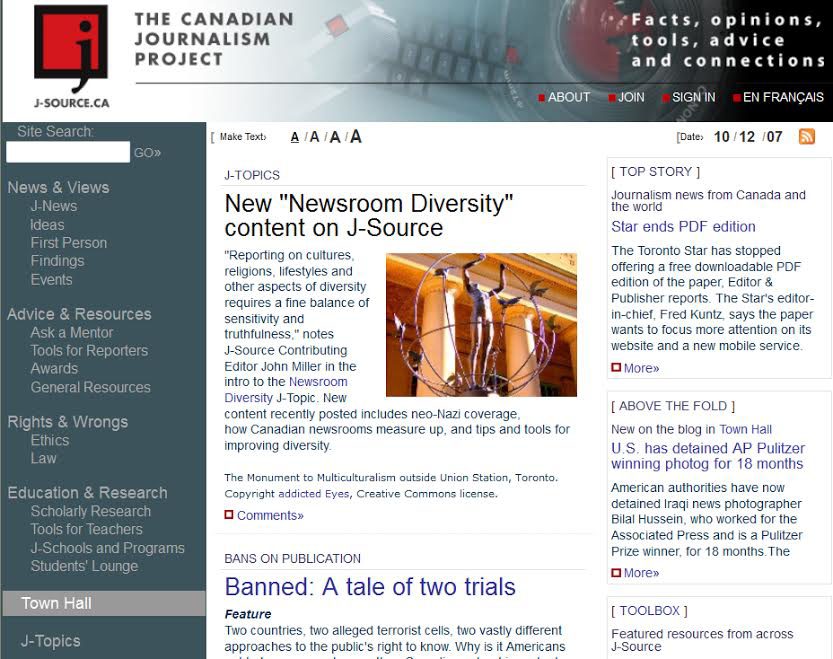Looking back, looking ahead
By Patricia W. Elliott, Editor-in-Chief
Becoming J-Source’s fourth editor-in-chief is an honour that comes with big shoes to fill.
On May 26, Janice Neil (editor-in-chief #2) and I sat in a booth at the Mercury Café in Regina, Sask., sipping coffee and filling in each other’s memory gaps. It was a great conversation, not only about the past, but also about all the future possibilities for a project that has survived and thrived.
Hard to believe nearly 10 years have flown since I sent an innocent email inquiry to Ivor Shapiro (e-in-c #1). What was this thing called “the Canadian Journalism Project” that I’d heard about, and was there room for the University of Regina’s School of Journalism?
Turned out there was ample room. The U of R was immediately welcomed aboard. It was my privilege to take part in early planning and see the first prototypes of Projet-J/J-Source.
This morning, for old time’s sake, I checked out the website’s earliest incarnation to be captured by the Internet Archive’s Way Back Machine. On Oct. 13, 2007, J Source carried news of an ancient artefact called “videotape” being seized by police. There was plenty of angst about pay-walls—will we or won’t we? I even spied an article by me that I’d forgotten I’d written.
That was then, this is now. Today’s site has a far newsier feel to it, much more content, and an expanding readership. It stands on the frontlines of protecting freedom of expression in Canada.
Over coffee, Janice pointed out that I was the first e-in-c from Western Canada. The J-Source team has done a great job building a national presence, something I hope to expand.
I’m also committed to taking the Truth and Reconciliation Commission’s call to action on media seriously. From Canada’s earliest days, Indigenous people have endured being maligned and misrepresented in the press. Canadians have now received a catalyzing call to build new relationships, and I’m excited to explore the role J-Source might play.
So those are a couple of areas of interest to me. I’m eager to hear what others have in mind for the coming year. We have a great team of section editors, contributors, readers, and supporters for me to connect with in the days to come. I hope to tap a few new shoulders, too. Whether in a Regina diner or on the phone, I know good conversations lie ahead.
A thousand thanks to outgoing editor-in-chief Bruce Gillespie (#3), publisher Christopher Waddell and associate editor H.G. Watson for creating the kind of well-organized, forward-looking environment that makes transitions easy.
Everyone out there in J-Source Land, feel free to contact me with your thoughts and story ideas. And, especially, do not pass through Saskatchewan without knocking on my door.
You can reach Patricia W. Elliott at pelliott@j-source.ca.
Patricia W. Elliott is editor-in-chief of Facts & Frictions / Faits et frictions and associate professor of journalism at First Nations University of Canada and the University of Regina.

